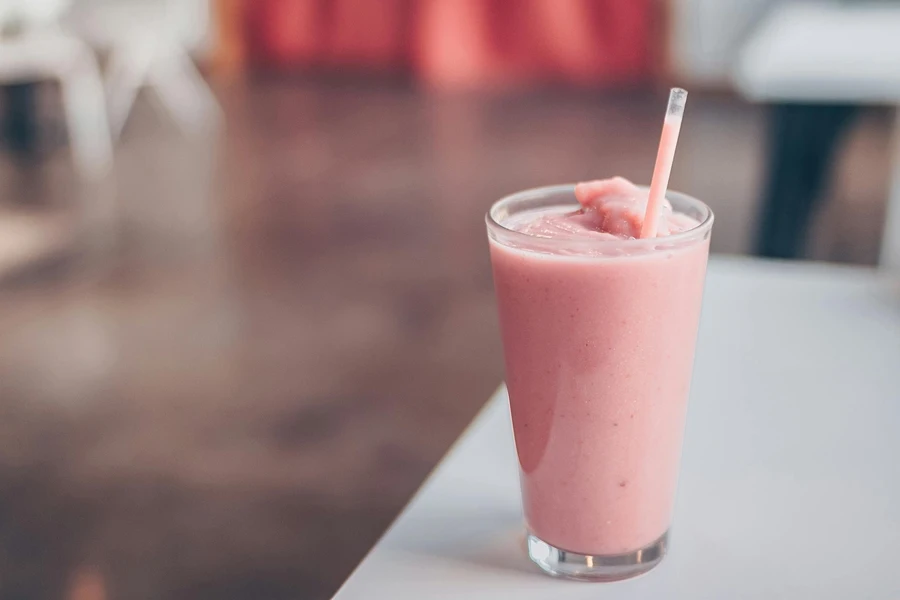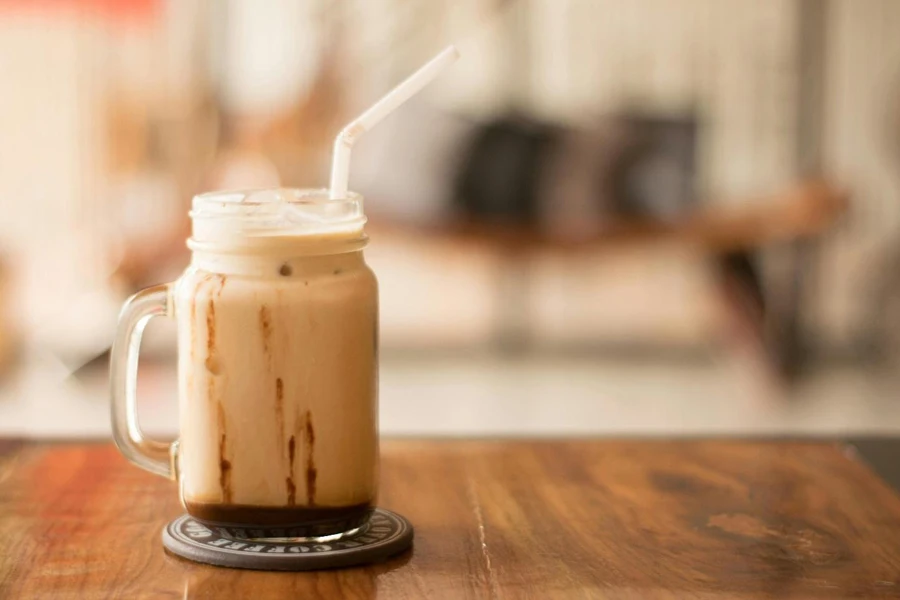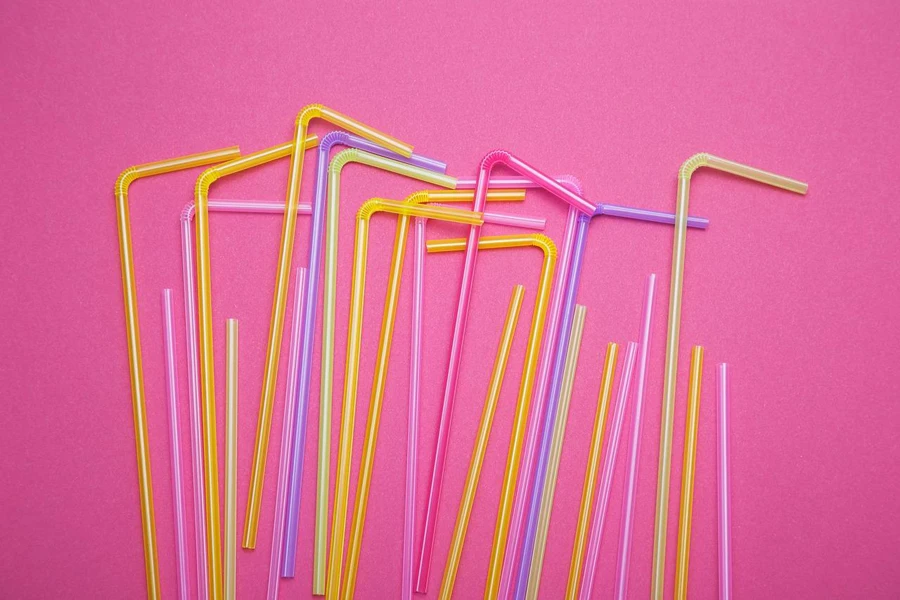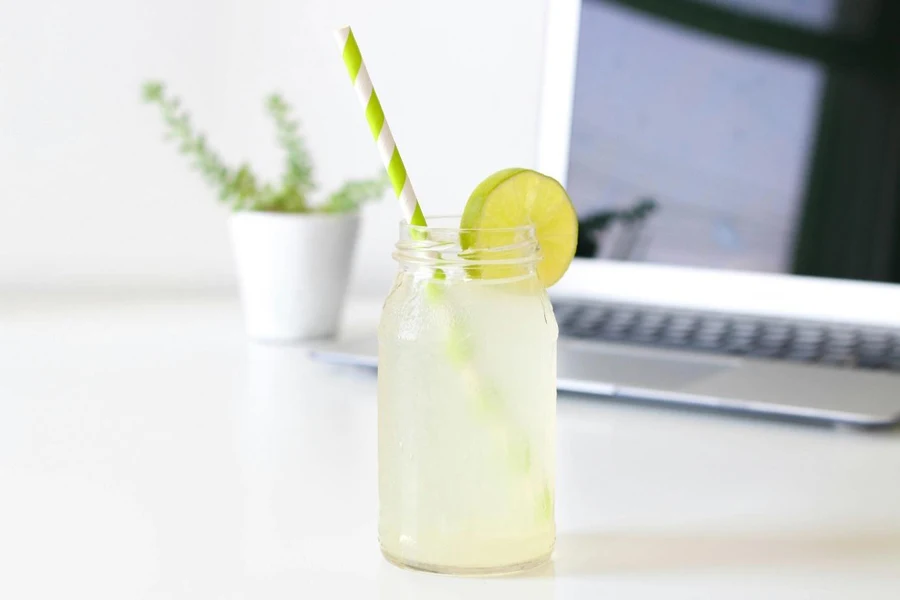In today’s changing market environment, choosing straws goes beyond just functionality – it demonstrates a company’s dedication to sustainability and staying current in the market scene. As eco-friendly choices become more available, professionals in the industry need to grasp important trends and types of products to make smart buying choices. With the rise of bans on single-use plastics and increased consumer interest in eco options, businesses need to explore biodegradable, compostable, and long-lasting substitutes. This article offers a comprehensive look at the market dynamics, diverse straw materials, and critical factors for selection, equipping buyers to make environmentally and economically sound choices.
Table of Contents
● Market overview: trends and growth in the disposable straw industry
● Types of disposable straws and their features
● Choosing the right disposable straws for your needs
● Conclusion
Market overview: trends and growth in the disposable straw industry

Market scale and projections
The straw market is expanding steadily due to the rising need for sustainable alternatives worldwide in the food and beverage industry. According to projections from Future Market Insights, the global market is estimated to reach $32.2 billion in 2033. The anticipated growth rate from 2023 to 2033 is 5.3% and reflects the use of disposable straws in different industries and the increasing demand for environmentally friendly options in response to stricter regulations on single-use plastics. Governments around the globe are advocating for solutions to minimize environmental harm by focusing on innovative alternatives and changing consumer preferences away from disposable straws.
Regional insights and growth leaders
Regarding location and market share dominance, for 2022, Europe was at the forefront by accounting for 23.5% of sales of disposable straws. This leadership position is attributed to the region’s regulations and dedication to decreasing pollution. In Asia-Pacific, increasing consumer interest in environmentally friendly items has boosted the market growth in areas like China and Japan. China’s straw market alone is estimated to reach $8.2 billion by 2033. As major areas enforce environmental regulations and adopt biodegradable straw technologies, the market demand in those regions remains strong, propelling the Asia Pacific and Europe to the forefront of the changing landscape for straws.
Types of disposable straws and their features

Plastic straws: cost-effective but costly to the environment
Plastic straws, typically made from polypropylene (PP) or polystyrene (PS), are cost-effective due to the low expense of these materials and the efficiency of mass production techniques like injection molding. Despite these advantages, plastic straws are highly resistant to decomposition, lasting up to 300 years in landfill conditions. Lightweight and buoyant, they easily enter waterways and are prone to fragmentation into microplastics, which persist in marine ecosystems. The new rules regarding single-use plastics have caused a drop in the manufacturing of plastic straws, prompting companies to explore options that offer the same benefits while being more environmentally friendly.
Paper straws: popular but limited durability
Paper straws are constructed from food-grade, biodegradable paper with additional layers to enhance water resistance. Typical paper straws use kraft paper treated to hold up in liquids for about two to three hours. While suitable for cold beverages, their durability reduces significantly with thicker drinks or prolonged exposure, as they begin to soften and may even dissolve. To address this, manufacturers are exploring wax or plant-based coatings to extend durability, making paper straws a common choice for short-duration, eco-conscious use in food services where compostability is required.
PLA and PHA straws: compostable plant-based solutions

PLA and PHA straws are eco options from sources like cornstarch and microbial fermentation. PLA straws break down completely within a month in compost facilities with high heat and moisture levels while maintaining durability for cold beverages in regular conditions. PHA straws are adaptable since they can decompose in marine and soil settings due to their improved biodegradability. Both materials maintain a similar appearance and texture to plastics, yet they are ideal for sectors with access to closed-loop composting facilities.
Bamboo and agave straws: sturdy, reusable, and sustainable
Making bamboo straws involves cutting and smoothing bamboo stems that are naturally hollow to create a washable option with a distinct texture that can withstand hot and cold temperatures well. In contrast to bamboo straws, the production method for creating agave straws uses fibers from the plant that are compressed and formed into a solid and robust structure. These agave-based straws are particularly resilient in hot beverage settings, making them highly suitable for use in cafes or restaurants. Moreover, fibers add a natural flavor to beverages, providing them with an additional unique quality. Both bamboo and agave straws biodegrade naturally, offering a long-term solution for venues prioritizing aesthetics and reusability.
Sugarcane straws: renewable and versatile
Sugar cane straws are made from bagasse, which is the remaining residue left after the sugarcane juice extraction process is complete. This byproduct is dried, pulped, and molded into straw forms that are naturally heat-resistant, making them suitable for hot drinks as well. The bagasse pulp is processed to remove sugars, ensuring that sugarcane straws are flavor-neutral and durable for various drink types. These straws decompose in composting conditions, aligning well with circular production models that minimize waste by repurposing agricultural byproducts into consumer goods.
Choosing the right disposable straws for your needs

Evaluating materials for environmental impact
When selecting materials for single-use straws, it’s important to consider how they break down in the environment, such as their biodegradability and compostability factors. Eco-friendly options like PLA, paper, bamboo, PHA, and sugarcane have their benefits depending on the compost facilities and the conditions needed for complete decomposition. PLA straws, for instance, need industrial composting environments to break down completely within three to six months, whereas bamboo and sugarcane options can decompose naturally, even in landfill or marine environments. Assessing these factors based on intended disposal routes ensures the straws will meet sustainability standards without long-term environmental damage.
Matching straw size to beverage type
Selecting the appropriate straw size, length, and diameter for specific beverages optimizes the user experience and product durability. Smoothies and bubble teas typically require 8 to 12-mm straws to accommodate thicker solids and liquids, such as tapioca pearls, without causing blockages. On the other hand, standard straws for juices or sodas typically measure between 6 to 8 inches in length and about 0.2 to 0.25 in diameter. Cocktail stirrers are around 5 inches shorter and designed for mixed drinks. Proper sizing enhances functionality and ensures the straw remains intact throughout use, especially for materials like paper, which can degrade faster in liquid.
Balancing cost-effectiveness with sustainability
While eco-friendly straws may have higher upfront costs than plastic, bulk purchasing can significantly reduce per-unit expenses, making sustainable options viable for high-volume users. Cost efficiency varies by material; PLA and paper straws are typically less costly than bamboo or agave alternatives, which require more intensive processing. However, these options still align with sustainability goals, offering practical alternatives for businesses aiming to reduce waste without sacrificing performance. Additionally, the initial investment in eco-friendly options can enhance brand image, as environmentally-conscious customers are more likely to support businesses that actively pursue sustainable practices.
Ensuring compliance with local regulations
Ensuring that businesses follow both global and local regulations regarding plastics is essential for those transitioning to environmentally friendly straw options like compostable PLA or paper straws due to the ban imposed in various areas against plastic straws made from polystyrene material. Different regions have various rules in place. Some regions demand that biodegradable straws adhere to compostability standards or be sourced from renewable materials within the area. Staying updated on evolving standards allows businesses to avoid penalties and ensures that selected straws align with environmental and health guidelines, supporting both compliance and a reduced ecological footprint.
Conclusion

Switching to eco-friendly straws provides businesses with a tangible method to support sustainability objectives and lessen their ecological footprint while boosting their brand image. A company can impact waste reduction and comply with regulations by opting for biodegradable or compostable alternatives. These sustainable straw options resonate with eco customers and position companies as leaders in reducing waste and encouraging mindful consumption.




